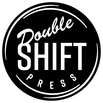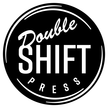As anyone in the third sector knows, the 2016 election
dramatically altered the landscape in which nonprofits operate. For some, these changes may even pose an
existential danger.
So, what’s a nonprofit to do? How does an organization strategize in the face of an uncertain future?
This isn’t a hypothetical question for some of our clients, who are faced with the necessity of significantly expanding their pool of potential donors and partners. And for faith-based organizations (which face both
shrinking government funding and
shrinking congregations), connecting with a larger (secular) audience poses unique challenges.
Those challenges (and their solutions) provide useful insight for any mission-driven organization.
We talked about the challenges of communicating in an uncertain environment with one of our recent clients, Cheryl Behrent, director of
Sarah’s… an Oasis for Women. Sarah’s is a Saint Paul-based nonprofit program that provides housing and crucial services for women who have experienced severe violence and trauma. Because it offers a safety net for women who don’t have access to any other resources, Sarah’s works primarily with immigrants, whose position in the United States is
increasingly tenuous. And like many other nonprofits, Sarah’s faces an ever-increasing demand for the services.
What does the uncertainty of the current landscape mean for Sarah’s message?
Cheryl says that flexibility is key. Sarah’s was founded by the Sisters of St. Joseph of Carondelet, St Paul Province (CSJ). The CSJs and their ministries foundation provide approximately 50% of Sarah’s funding. The other 50% comes from individual donors and grants from private foundations.
“When I’m in a church setting or faith-based community, the emphasis is that we’re a ministry—people are naturally interested to hear about the history of the Sisters, and our connection to the Province,” she notes.
But as Cheryl points out, it’s important to be able to adopt other frames of reference, depending on the audience. She says, “The CSJs value
interfaith connections,” so Sarah’s has always given priority to reaching beyond its primary stakeholders and creating broad connections.
That means being adept at considering a wide range of ways that people might find to connect with an organization. For example, Cheryl often prefers to
start talks with a Q and A, to understand what her audience’s interests are.
This kind of flexibility is predicated on having a solid foundation of clearly defined values and a clearly articulated mission. That foundation gives an organization the ability to adapt its mission statement into an audience-focused
positioning statement—that is, a statement that describes why an organization is uniquely qualified to accomplish a goal that a specific audience cares about.
That sort of attention to audience is something that’s easy to overlook for nonprofit organizations that are (rightly) focused on accomplishing their core mission. But, as Cheryl recognizes, it’s a key example of the kind of nimble thinking that’s required of nonprofits now more than ever.





